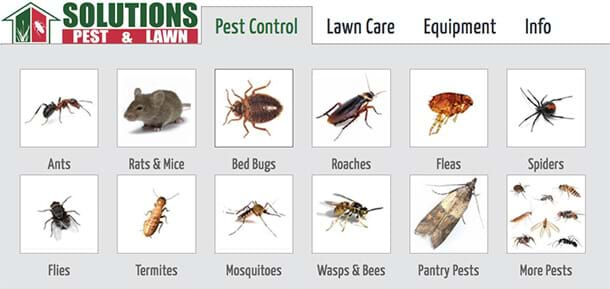You can search the table of contents for the landlord - tenant statutes. Some landlords offer a pre-printed checklist for noting any ex-isting faults present before occupancy. If a checklist is not pro-vide the tenant may write one and make two copies —one for the landlord and one for the tenant. The checklist should be signed by both the tenant and the landlord to prevent future disputes. Damages caused by the tenant , however, will be repaired only at tenant ’s expense.

The guide is a good resource on pest control , but not great on the law. If an infestation has already occurre the landlord is responsible for paying a pest control service. The tenant is responsible for informing the landlord of any of these problems.
For those who rent regularly it’s important to be knowledgeable about all of the rules and laws that govern a particular area. This can be done by setting up a rental inspection and give the tenant proper notice beforehand. Take pictures of the environment that may be leading to the pest issues. The Official State Statutes and other reputable municipal sources were used to research this information.

All sources are cited appropriately. With that sai landlord - tenant laws are always changing, and may even vary from county to county. Instantly Find and Download Legal Forms Drafted by Attorneys for Your State.
Control Your Pest Problems Today. Chat with Online Legal Professionals. Get and More in Minutes, Hours a Day. Ask a Tenant Law yer for Assistance. If they reported the problem and no steps were taken to fix it, then legal action becomes an option.

It is common for tenant or landlord laws to differ between all of the various states. Maryland: Yes and No. In single-occupancy homes, the landlord is required to provide a clean space at the time of move-in.
After this, the tenant is responsible for any infestations. Infestations are considered repair issues and tenants should follow the Steps to Request a Repair. If, for some reason, the landlord introduced the pests, the responsibility for killing the pests woul of course, fall on the landlord. Based on the LTB rights and responsibilities between landlord and tenant, it is the landlord’s responsibility to deal with bedbug infestations, while it is your responsibility as a tenant to comply with treatment options.
In many cases, it is the tenant responsibility first, and the landlords responsibility secon but it varies from state to state as the law requires. Minor short-term issues are best handled by tenants. However, if it is found that a tenant knowingly or recklessly caused the infestation, that tenant can be charged for the pest control costs.
He must make sure the rental is not infested with rodents, insects, and other pests when the tenant moves in, an except in the case of a single family residence, control infestation during the tenancy unless the infestation is caused by the tenant. The landlord must provide a copy of their state or local landlord - tenant laws such as rent control rules. The landlord must provide the identity of the landlord and the person authorized to receive legal papers and manage the premises. Before hiring an exterminator, you must give the landlord notice of the problem and provide access to your apartment. Mold: Mold in the living space is dangerous as it can cause breathing problems or more severe reactions.
Landlord - tenant laws. Lead hazards, such as chipping paint, can pose health risks, especially to young children. Generally, as a tenant , you are required to take steps to make sure an infestation does not occur. This includes keeping a premises clean and addressing a pest presence early.
It is recommended you store food properly, clear cobwebs, set mouse traps, and use sprays and baits. A local landlord - tenant law attorney can give you proper legal advice to help you to fully understand and protect your rights.
No comments:
Post a Comment
Note: Only a member of this blog may post a comment.